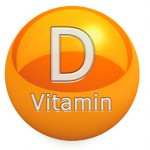In addition to hypercalcemia, patients with sarcoidosis can present with hypercalciuria and nephrolithiasis. The astute clinician who notices and evaluates these patterns is likely to identify sarcoidosis in patients with otherwise unexplained hypercalcemia, nephrolithiasis or renal insufficiency.
Treatment
Treatment of sarcoidosis represents an interesting clinical conundrum. The presence of sarcoidosis does not necessarily mandate treatment because the disease does not cause symptoms or organ dysfunction in all patients, and treatments, such as corticosteroids, may have significant adverse effects. Moreover, sarcoid granulomas are believed to result from the interaction of an antigen with the immune system, and granulomatous inflammation may be an attempt to clear the antigen.
Thus, when medications used to treat granulomas are later withdrawn, the inciting antigen may still be present and could lead to granulomatous inflammation and relapse of disease. This process may explain why relapses appear more commonly in patients previously treated for sarcoidosis than in patients who were not previously treated and experienced spontaneous resolution of their symptoms.3,4
When there is physiologic impact of disease, such as shown on pulmonary function testing, or functional impairment due to symptoms and decreased quality of life, Dr. Judson indicated treatment is warranted.
Corticosteroids remain the mainstay of sarcoidosis treatment, but other medications that show some evidence of efficacy include methotrexate, azathioprine, leflunomide, hydroxychloroquine, infliximab and adalimumab.5
Although much of the focus on the treatment of sarcoidosis is on active inflammation, it should be noted the most serious and permanent damage related to sarcoidosis is from fibrosis. Anti-fibrotic agents may mitigate the effects of fibrotic disease in patients with sarcoidosis.
In a pivotal clinical trial of nintedanib for progressive fibrosing interstitial lung diseases, patients receiving this medication had an annual rate of decline in forced vital capacity that was significantly lower than that experienced by the placebo control group. In this trial, about 12% of the study patients had sarcoidosis.6
Given these data, anti-fibrotic agents may be a worthwhile consideration for some patients with advanced sarcoidosis, according to Dr. Judson. But the ongoing development of potential biomarkers is needed to screen for and predict the development of fibrotic disease in patients with sarcoidosis.
DISR
Dr. Judson concluded the talk with a discussion of DISR, which involves a systemic granulomatous reaction that is indistinguishable from sarcoidosis and occurs in a temporal relationship to an offending drug. DISRs can manifest with many of the exact same features of sarcoidosis, including bilateral hilar adenopathy, uveitis, granulomas in scars and tattoos, hypercalcemia and elevated serum angiotensin-converting enzyme (ACE) levels. Additionally, the histology of biopsy samples from these patients is indistinguishable from sarcoidosis.
